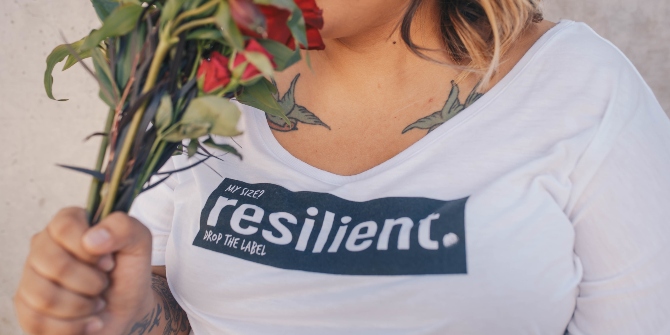 In several recent major news events, from wars to migration concerns to elections, stories involving a heart-breaking or even shocking image of an oft vulnerable child has dominated the news cycle and social media chatter. But is a child’s image – no matter how poignant – able to provide truly informative and sustainable coverage or lead to more episodic, emphatic reactions in response to news events or crises? LSE Assistant Professor Omar Al-Ghazzi explores the value of using children’s images to bear witness, portray meaning or stoke up empathy.
In several recent major news events, from wars to migration concerns to elections, stories involving a heart-breaking or even shocking image of an oft vulnerable child has dominated the news cycle and social media chatter. But is a child’s image – no matter how poignant – able to provide truly informative and sustainable coverage or lead to more episodic, emphatic reactions in response to news events or crises? LSE Assistant Professor Omar Al-Ghazzi explores the value of using children’s images to bear witness, portray meaning or stoke up empathy.
During the UK election campaign, the image of an ill child lying on his jacket on the floor of a Leeds hospital dominated news coverage a few days before the opening of the polls. The picture went viral as it was seen as signifying the systematic and deteriorating crisis of the NHS under Tory rule. Prime Minister Boris Johnson was confronted by an ITV reporter who showed him the picture on his phone and asked him for an immediate reaction. Johnson initially refused to engage by taking the journalist’s phone and putting it in his pocket. He soon conceded, looked at the image, and expressed regret that the child and his parents had a bad experience in hospital. In this case, the fast pace of the election coverage moved on from the focus on the boy’s photo, how it was taken, what his parents did, etc.
Albeit in the entirely different context of reporting a devastating war, this media exchange was reminiscent of a 2016 TV interview that CNN journalist Christiane Amanpour conducted with Russian foreign minister Sergey Lavrov. She showed him a picture of an injured and shocked Syrian boy, sitting in the back of an ambulance following Russian bombardment of eastern Aleppo. The picture had gone viral and became known as “the ambulance boy” photo.
As with the Johnson exchange, Amanpour asked Lavrov for immediate comment about the boy’s photo and got a clumsy reaction mixing avoidance, denial and an attempt to show empathy. In both cases, beyond the immediate awkwardness, it is difficult to say what the use of a child image has achieved in terms of changing the narrative and influencing politics. Of course, Johnson ended up with a landslide victory in the general election, and Russia continued unabated its rhetoric of ‘fighting terrorism’ in Syria.
So what does the use of child images to stoke up empathy in the news achieve?
This is what I explored in a recent article “An archetypal digital witness: The child figure and the media conflict over Syria,” which was published in the International Journal of Communication. I investigate the demands placed on the figure of the child witness in a converging news and social media environment and ask whether such images serve as quintessentially authentic images and truthful voices able to speak beyond the complexities of geopolitics, war, and ideology, regardless of journalistic intervention.
While controversies about the figure of the child are intrinsic to modern warfare and international politics, it is important to explore what form this phenomenon takes in the current networked news media environment. This is particularly relevant under conditions of authoritarian restrictions over journalistic access, as has been the case in Syria—a situation that gave rise to multiple voices claiming to speak from the authoritative position of eyewitness.
I focus on two cases that unfolded in 2016 during the Russo–Syrian military campaign in East Aleppo: the aforementioned image of three-year-old Omran Daqneesh, and the Twitter account of seven-year-old Bana Al-Abed, a Syrian girl from Aleppo who tweeted about the siege of the city with the assistance of her English-speaking mother.
I argue that two implicit tendencies characterized the operation of child witness texts in Syria. The first is the assumption that digital communication technologies and social media can serve as vehicles for direct and unmediated witnessing of distant conflict. The second tendency is a desire for a witness figure who can similarly offer an unmediated account of what is happening on the ground. Children were given the roles of truth seers and truth tellers, supposedly able to speak and give meaning beyond muddled geopolitics, bloody wars, and disconcerting ideologies, and regardless of the question of journalistic presence.
Both tendencies characterised a reductive form of distant witnessing that obsesses over the details of individual incidents and makes them subjects of debate and conflict. Accordingly, the meanings these witness texts were meant to project are lost and emptied out, and the connections to broader circumstances and power relations these texts had are ignored. The result is an ecology of competing witnessing that construes children— given their cultural construction as ‘innocent’— as archetypal witness figures, simultaneously prone to virality and co-optation.
This mode of digital witnessing, in the case of Syria, implicates activists on the ground, international media outlets, and social media commentators— despite the power imbalances between them. I contend that it has pushed Syrian children to the forefront of news narratives and social media commentary. The child has been construed as an archetypal figure in the global circulation of digital witness accounts—simultaneously hyped up as the ultimate truth teller, and/or dismantled as an intrinsically helpless victim of manipulation.
Beyond the case of Syria, and to go back to my question about what these photos’ virality achieves, I argue that making the image the story takes away from the reporting and understanding of the larger picture of suffering. The news focus on a single image that happens to go viral makes the photographer, the framing, the angle, the child, and his/ her parents and their parenting choices, the issue to be discussed.
Even in the case of the viral image of Syrian refugee boy Alan Al-Kurdi, who drowned off the shore of Turkey, and generated a wave of empathy with Syrian refugees, research suggests that ultimately his heart-breaking photo got incorporated into pre-existing discourses, including fears of migration and instability (see Bozdag & Smets, 2017, Sajir & Aouragh, 2019).
Whether discussing the UK election cycle, US incarceration of migrants or the Syrian war, journalists, social media activists and commentators should consider the consequences of making photos of vulnerable children the story, instead of focusing coverage and attention on the bigger social and political context. The logic of circulation that seeks virality, even if done under moral justifications, does not make for informative coverage or a sustainable empathetic reaction.
Put differently, a child’s image, when caught up in the news cycle, is not necessarily worth a thousand words. In fact, we need those words to contextualise the image and re-orient us to the larger picture.
This article represents the views of the author and not the position of the Media@LSE blog, nor of the London School of Economics and Political Science.






1 Comments